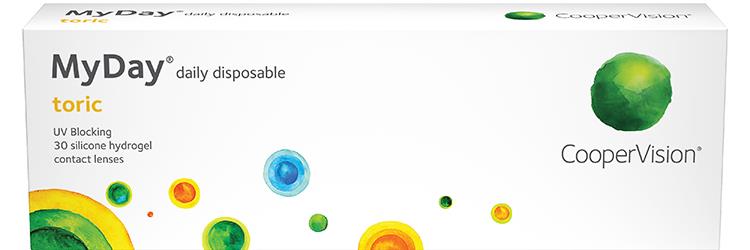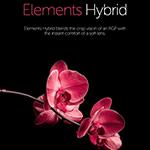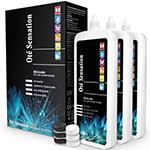Past, present and future development in contact lenses was the key theme for the 40th anniversary conference and exhibition of the British Contact Lens Association (BCLA) at the Liverpool ACC.
‘Our 40th anniversary conference not only allowed us to facilitate a comprehensive exchange of knowledge, the conference also provided an opportunity for us to celebrate,’ said BCLA chief executive Cheryl Donnelly. ‘We have been at the heart of many advances in our industry over the last four decades and that will continue as contact lenses advance during the next four decades.’
In both the clinical lectures and the exhibition hall, myopia management, OrthoK and dry eye were all high on the agenda over the course of the three days (June 9-11).
Myopia management
Myopia management and its new Misight lenses were very much front of mind for Coopervision. Its senior manager of clinical research, Paul Chamberlain, presented the three-year results from the multi-year clinical trial assessing a specially-designed, dual-focus myopia control 1-day soft contact lens in reducing the rate of progression of juvenile-onset myopia.
The prospective, multi-centre, double-masked, randomised study enrolled 144 myopic children aged 8-12 years from Singapore, Canada, England, and Portugal.
Findings revealed that use of the dual-focus contact lens, which has alternating visual correction and treatment zones, was effective in slowing myopia progression by 59% when measured by mean cycloplegic spherical equivalent and 52% as measured by mean axial elongation of the eye, when compared to the children in the control group wearing a single vision one-day contact lens.
Coopervision projected the prevalence of myopia would increase from approximately two billion people worldwide in 2010 to almost five billion people in 2051, bringing with it short and long-term eye health challenges like glaucoma, cataract, retinal detachment and myopic maculopathy if not properly addressed.
An Orthokeratology symposium with workshops and live, hands-on, fitting routines with volunteer patients, outlined the competencies which practitioners new to Ortho-K should acquire before working with the lenses.
More advanced practitioners could find a range of talks from the likes of Dr Janis Orr of Aston University, who discussed the technique and its importance in myopia management and Pacific University’s Professor Randy Kojima, who spoke on the applications of corneal topography with interpretation of the subsequent imagery.
Workshop sessions looked at hands on fitting, with industry experts providing visitors with an opportunity to experience a variety of fitting methods.
Dry eye disease
Findings from the much anticipated TFOS DEWS II study were also presented by associate Professor Jennifer Craig from the University of Auckland and Professor James Wolffsohn. As part of the study, a new definition and classification of dry eye disease emerged. The previous definition was two sentences long and deemed too complex. The new definition states: ‘Dry eye is a multifactorial disease of the ocular surface characterised by a loss of homeostasis of the tear film, and accompanied by ocular symptoms, in which tear film instability and hyperosmolarity, ocular surface inflammation and damage, and neurosensory abnormalities play etiological roles.’ Full details of the study are being covered by Optician clinical editor Bill Harvey.
Away from the TFOS DEWS II news, the first ever ‘live’ dry eye assessment was performed from the podium, giving delegates a new insight into best practice, while rapid-fire presentations enabled visitors to digest a wealth of information on a range of dry eyes subjects and contributions from members of the European Dry Eye Network.
BCLA awards winners 2017
Dry Eye Practitioner of the Year: Nick Dash
Young UK Contact Lens Practitioner of the Year: Laura Reece
Industry Award: Paul C Nicolson
President’s Award: Kate Gifford
BCLA Medal for outstanding contribution to contact lenses: Professor Michel Guillon
BCLA Dallos Award: Jaya Sowjana Siddireddy
BCLA Irving Fatt Award: Fabrizio Zeri
Coopervision
MyDay toric lenses
The MyDay toric daily disposable allows for a greater number of patients with astigmatism to be fitted with the company’s softest silicone hydrogel lens, said to not compromise comfort and provide a high level of lens stability and visual acuity.

At the centre of MyDay’s design is the make-up of the silicone. Long chain silicone molecules support efficient oxygen delivery to the cornea and use less raw silicon, creating more space for hydrophilic components and performance.
coopervision.co.uk/practitioner
 No7 Contact Lenses
No7 Contact Lenses
Elements
Following five years of development, No7 Contact lenses debuted its Elements Hybrid contact lens for irregular corneas.
The RGP portion of the lens is available in two diameters – 10mm and 8.5mm. The smaller diameter is designed for keratoconic eyes (KC) and can be fitted using any standard KC fitting set.
This is expected to be especially useful for hospitals as the fitting strategy is familiar and no new sets are needed. Patients who have become intolerant of RGPs are likely to move to the Elements design. Made from Contamac, with the RGP section being of DK100 material and the soft silicon skirt of DK65, the lens should offer comfort with no visual compromise.
Northern lenses
Tangible Hydra-PEG
Practitioners will be all too aware that fitting custom contact lenses can be time intensive; adaptation times can take weeks and the possibility of lens drop-out due to lens problems can be high. Even with a successful fit, patients can still complain of discomfort and blurred vision. In many cases the lenses fit perfectly but don’t wet properly, leading to the formation of protein deposits.
Northern Lenses is now certified to apply polymer coating, Tangible Hydra-PEG, to GP lenses made of Contamac Optimum materials. The coating is a permanently adhered hydrogel film that improves wettability of the contact lens surface. Once the lens is treated, it is encapsulated in a mucin-like surface which the company said was advantageous when patients experienced dryness due to contact lens wear.
Using the correct products, such as Unique pH by Menicon, Clear Care by Alcon and Boston Simplus, the treatment will remain on the lens for up to 12 months. Alcohol-based solutions like Progent and water will impact on the performance of the coating.
0161 336 9000
 Oté
Oté
Sensation
Dutch contact lens and solutions manufacturer Oté Optics released a new three-month format of its premium Oté Sensation multi-purpose solution.
The all-in-one solution, now available in 3x250ml bottles with contact lens cases, is a duo antibacterial system said to offer increased wearing comfort thanks to the addition of high quality sodium hyaluronate.
Safilens
Fusion 1day astigma
The new Fusion 1day astigma lens from Italian manufacturer Safilens expands the company’s group of daily contact lenses that leverage its proprietary fusion technology system. An interaction between hyaluronic acid and tamarind seed polysaccharide stabilises the physiological relationship between the tear film and the ocular surface, providing the patient with longer periods of comfort.

The lens features Sleekform technology that is based on the pure prism, providing minimal thicknesses and a stable, uniform surface. In addition to limiting the mechanical strain associated with wearing contact lenses, the technology was said to reduce the issues related to differences in distribution of oxygen flow, typical of the designs currently available.
Fusion 1day astigma is available with more than 800 parameters – 3 cylinders and 8 axes.
